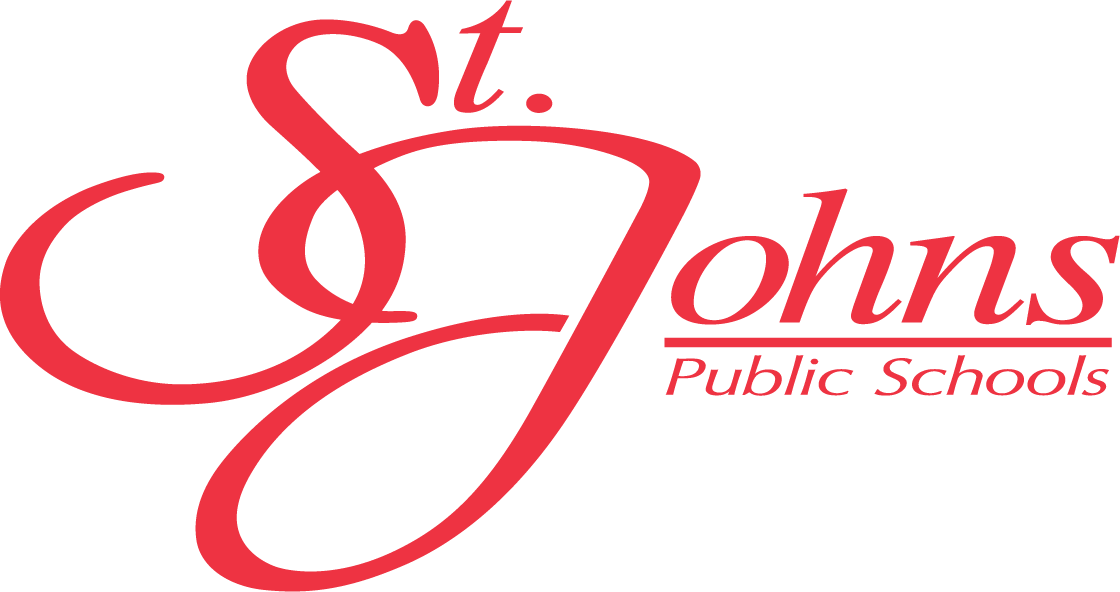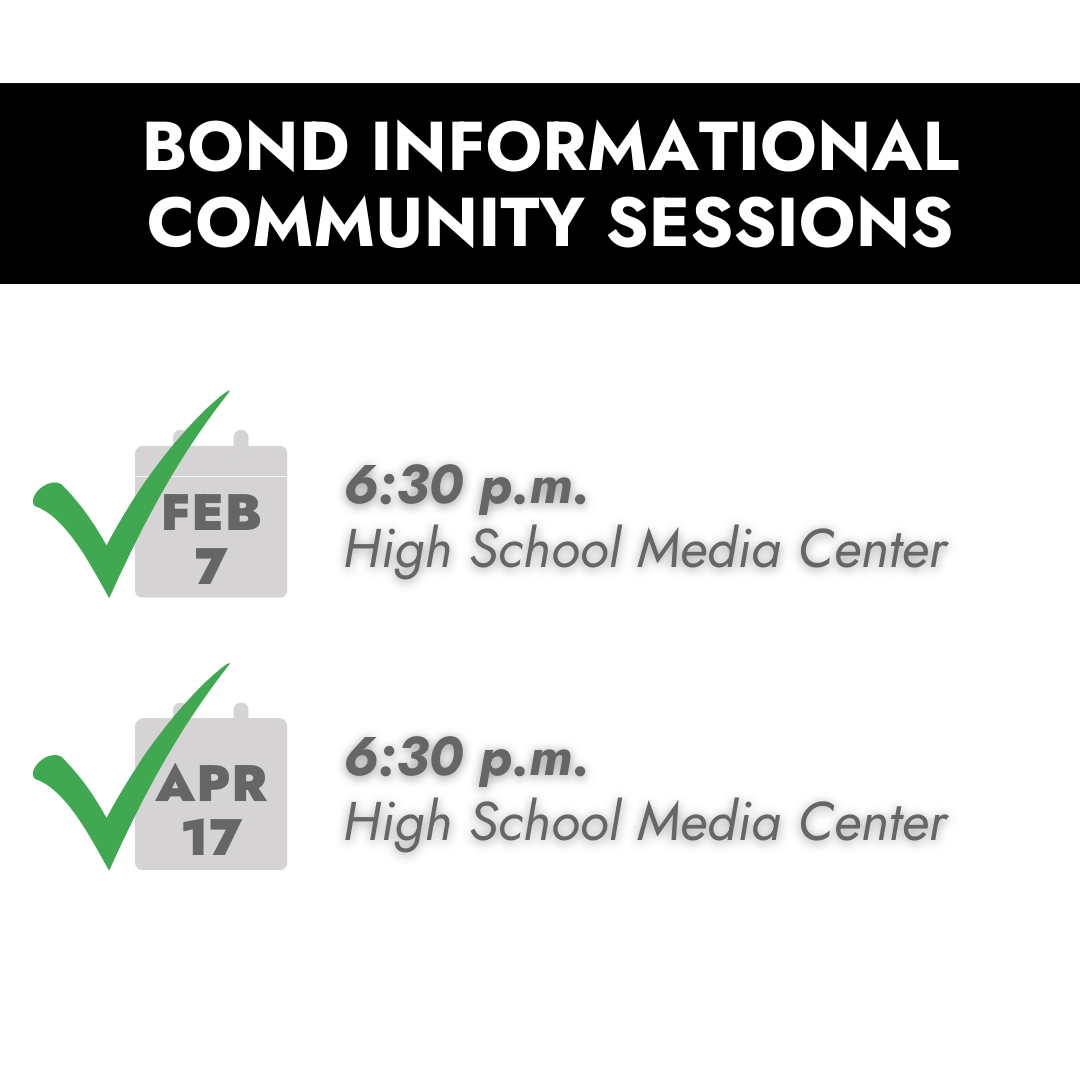
SCHOOL BOND PROPOSAL
On Tuesday, May 7, 2024, our community will vote on a school bond proposal for St. Johns Public Schools.
If approved by voters, this bond would provide $92,000,000 for improvements across the district at no tax rate increase expected over the current rate to address four key areas:
-
Safety & Security
-
New Early Childhood Center
-
Building & Learning Efficiencies
-
Athletics & Fine Arts Facilities
TAX IMPACT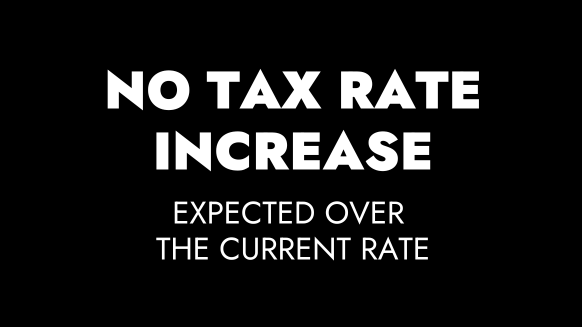
The debt millage rate is expected to remain the same as the current rate with no tax rate increase.
Bond Proposal Overview
Safety & Security

We want to ensure our students are safe in every corner of the district.
This means keeping up with best practices and technology to offer safe learning environments at every building. The May 7 bond proposal includes the following improvements:
- Increased Exterior Door Monitoring through expanded access control systems and improved security camera systems
- Secure Entrances with new entrance vestibules at Eureka, Gateway, and Oakview that mirror those of other buildings on campus
- Replacement Doors and Locks to bolster security within the building
Watch the Safety & Security video here.
New Early Childhood Center
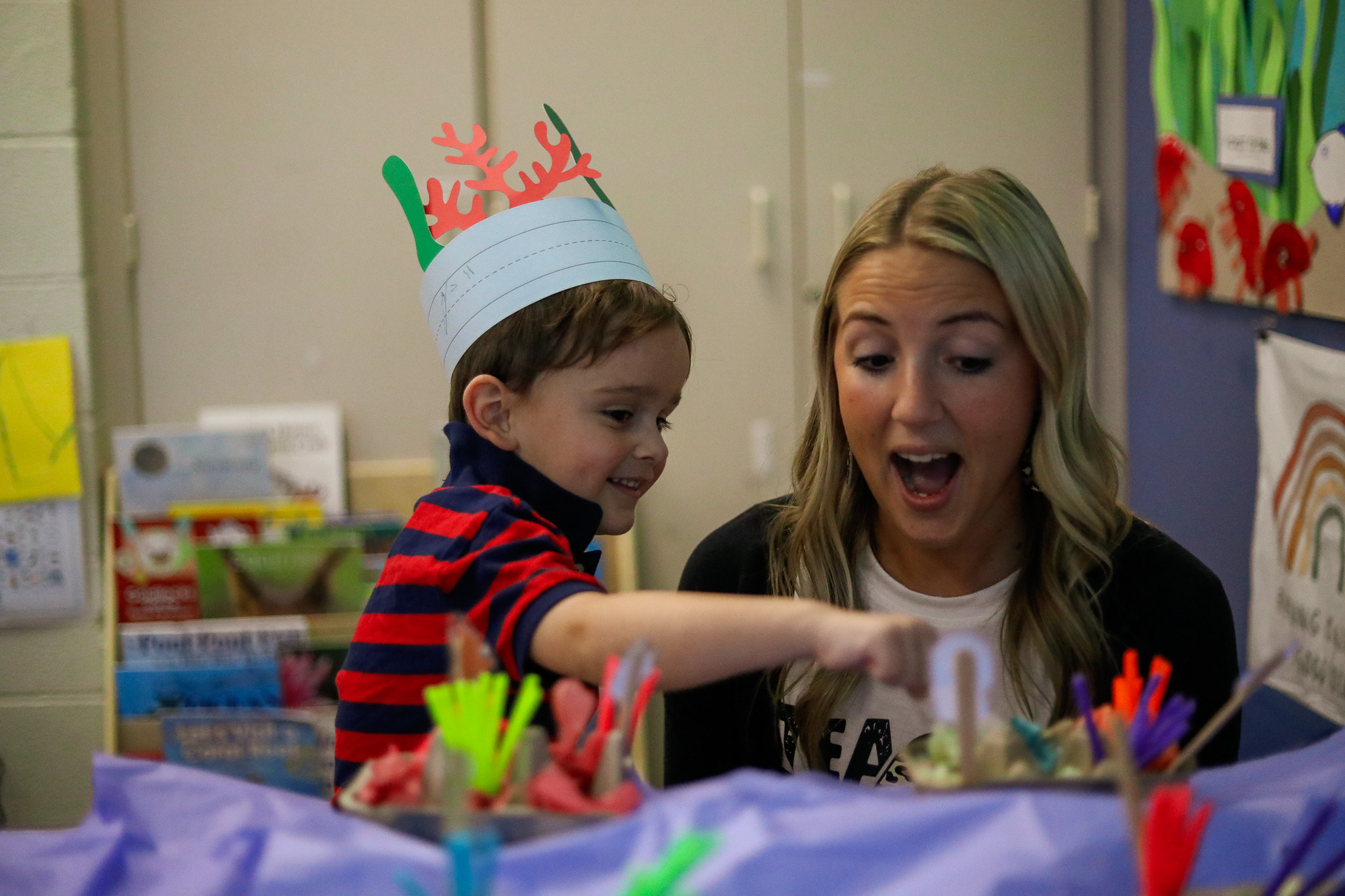 How would SJPS (or our community) benefit from an Early Childhood Center?
How would SJPS (or our community) benefit from an Early Childhood Center?
The bond proposal includes an ECC for three reasons:
- There is unmet demand for care of children ages 0-5, and this center helps fill that need1
- Research shows that high-quality early childhood education programs have a profound impact on the future outcomes of students2
- St. Johns currently offers early childhood programs at Riley and Oakview Elementary Schools with childcare programs at East Olive and Gateway. This new facility would allow us to consolidate our resources more effectively and provide a space specifically designed to fit the needs of our youngest learners rather than the current spaces that exist in our elementary schools. Consolidating our program into a single facility also helps with licensing and shared staff resources.
See our "Research & References" tab below for more information.
Building & Learning Efficiencies
Our buildings are aging, proving to be a challenge for maintenance and for teaching and learning.
In recent years, our facilities—some of which are over 55 years old—have shown wear and tear with old building systems, infrastructure, and technology that have reached their useful life.
In addition, some of our elementary schools’ learning environments are original to their construction in the 1950s and 1960s. While buildings have been updated over time, many original systems still exist. Proposed upgrades to classroom design and educational technology are intended to ensure that the infrastructure supports the teaching and learning within. Plus, renovating Riley and Eureka would help ensure a more equitable experience across the elementary schools.
The existing playgrounds are aging too. This bond would provide funding to improve our youngest learners’ access to play to supplement their classroom learning.
A list of our proposed improvements includes:
- Add more elementary classroom space
- Update and modernize learning environments by replacing things like flooring, casework and furniture
- Upgrade High School Metals, Wood, & Auto Shop
- Replace transportation building
- Enhance audio/visual technologies, landscaping, and finishings
- Improve heating & cooling
- Update deteriorating parking lots
- Install new elementary playgrounds
Watch the Building & Learning Efficiencies Video here.
Athletics & Fine Arts Facilities
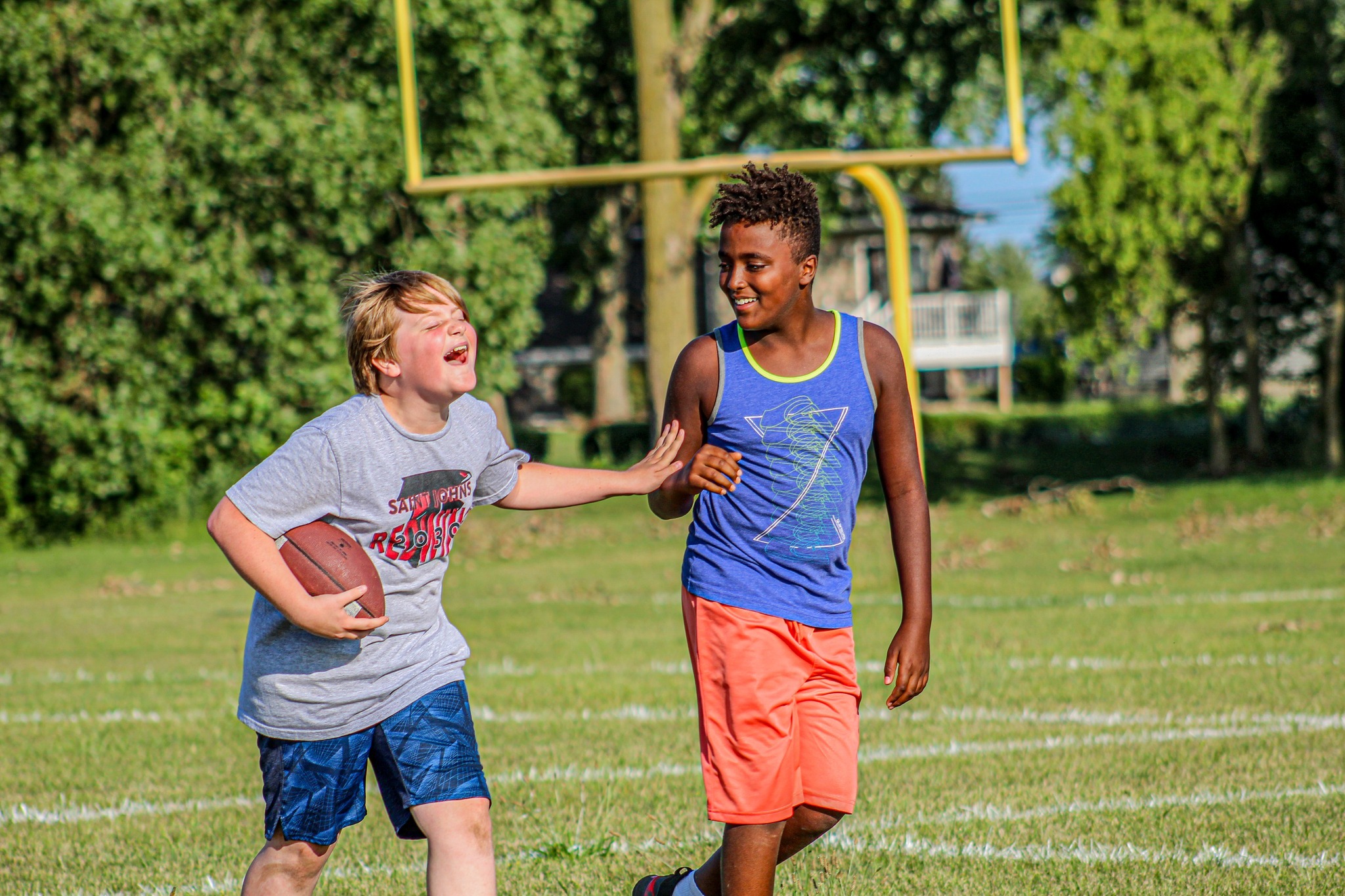 SJPS Athletics and Fine Arts offer a myriad of student and community experiences. Funds from this bond would allow the district to continue to allocate resources to these programs.
SJPS Athletics and Fine Arts offer a myriad of student and community experiences. Funds from this bond would allow the district to continue to allocate resources to these programs.
With the introduction of a multi-use turf field, we would be able to offer students and community members a more dynamic outdoor space for recreation. This new field, along with improvements to tennis, track, wrestling, baseball, and softball spaces would provide students with updated and more adequate infrastructure for their athletics.
The Fine Arts programs would also receive significant improvements: a stage floor replacement, lighting upgrades, and other interior updates to address aging finishes. The Band and Orchestra programs would receive funds to purchase long-requested instruments.
Research & References
1Childcare demand:
Clinton and Gratiot counties are considered counties with low capacity for childcare, meaning there is greater demand for childcare than there are spots available. For general reference, only one county in the state had enough spots for children in 2020. For this analysis, a county is considered to be a childcare desert if the ratio of kids ages 0-5 to licensed spots is greater than 3, have low capacity if the ratio is between 1.5 and 3, and have moderate capacity if the ratio is below 1.5.
Here is the most recent data from Clinton County: https://mlpp.org/ThinkBabiesChildCare/Clinton.pdf outlines that for every 1 licensed childcare spot available, there are 2.2 children on the waitlist to fill the spot, indicating there are more unfilled needs for childcare than actually available.
Here is the most recent data from Gratiot County: https://mlpp.org/ThinkBabiesChildCare/Gratiot.pdf outlines that for every 1 licensed childcare spot available, there are 2.7 children on the waitlist to fill the spot, indicating there are more unfilled needs for childcare than actually available.
2Research on the benefits of early childhood education:
Here are several key findings and studies highlighting the significant impact of high-quality early childhood education programs on future outcomes for students:
Long-Term Academic Achievement:
Abecedarian Project (1972-Present): A landmark study that began in the 1970s, demonstrating the lasting impact of high-quality early childhood education. Participants received early educational intervention from infancy through preschool. Results showed better cognitive abilities, academic achievement, and increased rates of college attendance and employment.
(The findings from this project have been published in various academic journals. Searching for "Abecedarian Project research" in databases like PubMed, JSTOR, or Google Scholar will likely yield peer-reviewed articles and publications related to this study.)
Perry Preschool Project (1962-Present): Another influential study that followed children who attended a high-quality preschool program. The findings showed that participants had higher high school graduation rates, better employment prospects, and decreased involvement with the criminal justice system compared to their peers who didn’t attend such programs.
(Similar to the Abecedarian Project, information and publications about the Perry Preschool Project are available in academic databases. Searching for the project name in the aforementioned databases will provide access to related research papers and articles.)
Social and Emotional Development:
Chicago Child-Parent Centers (CPC) Program: A longitudinal study following low-income children enrolled in CPCs showed improved social-emotional skills, decreased behavior problems, and greater school readiness. Participants had better educational outcomes and were more likely to avoid crime.
(Studies on the CPC program have been published in journals focusing on education, child development, and social sciences. Searching for "Chicago Child-Parent Centers Program research" in academic databases will lead you to relevant studies.)
Economic Benefits:
Economic Policy Institute (EPI) Report: Reports from the EPI suggest that investments in high-quality early childhood education yield significant economic returns. These benefits include reduced societal costs related to remedial education, healthcare, and criminal justice, and increased earnings and tax revenues due to a better-educated workforce.
(The EPI website (epi.org) contains reports, policy briefs, and research papers on various topics, including early childhood education. Browsing their publications or research section should provide access to reports discussing the economic benefits of investing in early childhood education.)
Brain Development:
Harvard Center on the Developing Child: Research on brain development emphasizes the critical period of early childhood when the brain is highly adaptable. Quality early education programs that stimulate cognitive, social, and emotional development can positively impact brain architecture, affecting learning and behavior throughout life.
(The Harvard Center on the Developing Child website (developingchild.harvard.edu) provides a wealth of information, publications, and resources related to early childhood development. Exploring their publications or resources section may lead you to the specific research and studies you're interested in.)
Policy and Implementation:
Ongoing Studies and Meta-Analyses: Continuous studies, including meta-analyses, consistently show the positive impact of high-quality early childhood programs. These analyses aggregate data from various studies to provide a more comprehensive understanding of the long-term effects.
The evidence from these studies and ongoing research strongly supports the notion that high-quality early childhood education programs have profound and lasting effects on children's cognitive abilities, academic achievement, social skills, and overall future outcomes. These findings underscore the importance of investing in and providing access to quality early childhood education for all children.
